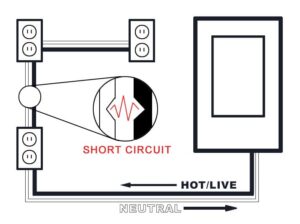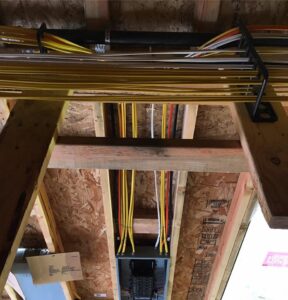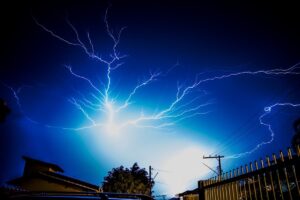Electricity powers our heating, cooling systems, and the dozens of devices and appliances we use every day. When installed and maintained correctly, your home’s wiring is safe and reliable. But when something goes wrong, the consequences can be serious, especially when it comes to short circuits.
A short circuit is one of the most dangerous electrical issues a home can experience. It can cause damage to appliances, trip breakers, or worse, start an electrical fire. Fortunately, most short circuits can be prevented with regular maintenance and a little awareness.
What is a Short Circuit?

Your home’s electrical system operates through individual loops called circuits. Each loop, typically assigned to a specific area or room, starts at your electrical panel. Power travels out along a hot (or live) wire, feeds outlets, switches, or appliances, and then returns to the panel along a neutral wire. When this loop is broken or disrupted, the flow of electricity stops.
A short circuit occurs when electricity strays from its intended path and finds a shortcut to the ground or neutral wire, often through a conductive material. This can generate excessive current and heat, resulting in sparks, melted wiring, or even fire. The cause of a short circuit might be as simple as loose connections, old wiring, or damage inside the walls.
Fortunately, your circuit breaker is designed to detect this sudden surge and cut the power. But it’s not a guarantee. That’s why inspections and preventive maintenance are so important.
Common Causes of Short Circuits
Short circuits don’t usually happen without warning. The most common causes include:
- Aging or faulty wiring: Homes with wiring more than 20 years old are especially at risk. Wires degrade over time or may not meet today’s safety standards.
- Damaged outlets: Burn marks, sparks, buzzing sounds, or a burning smell are all signs an outlet is unsafe.
- Loose connections: A wire that wiggles free from a terminal or box can easily make unintended contact with other components.
- Rodents or pests: Chewed insulation or gnawed wires create a perfect setup for a short circuit.
- Improper DIY repairs: Even minor mistakes like crossing wires or using the wrong type of outlet can put your system at risk.
How to Prevent a Short Circuit
Here are a few tips to help you avoid short circuits in your home:
1. Inspect Your Outlets
Before plugging in a device, give your outlet a quick once-over. Burn marks, unusual noises, or a burnt odor are warning signs. If your outlets are more than two decades old, have them professionally inspected, especially in older homes where wiring may no longer meet code.
2. Maintain Your Circuit Breaker
Your circuit breaker is your first line of defense. Keep it clean, label the fuses correctly, and look for signs of damage or wear like cracks, loose fittings, or rust. If you notice breakers tripping frequently, don’t ignore it. Call Prairie Electric.
3. Schedule Annual Electrical Inspections
Like a car tune-up or annual physical, your electrical system benefits from a routine check. Prairie Electric offers expert inspections to catch problems before they turn dangerous. We’ll evaluate your entire system, identify risks, and offer cost-effective solutions.


